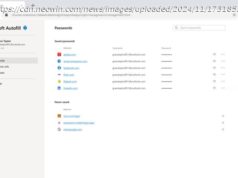This Linux distribution isn’t for the average user. But for those who’ve been around the block a few times, Window Maker Live is a wonderful homage to what Linux was like back in the day.
Linux has come a very long way. Not only is the kernel far more sophisticated and capable than during the 1990s, but the GUIs make everything so easy that working with the operating system is almost boring.
Back in the early years, running Linux on the desktop meant doing a lot of configuration via text files. And even though every window manager did things differently, it was almost an inevitability that a user would have to open a terminal window and work with the command line.
That challenge was also part of the fun. Some window managers went so far as to require users to edit desktop menus via a text file, such as the Window Maker window manager.
I spent a few years with Window Maker as my default desktop. Part of the joy was getting to know the system well enough that editing menus and undertaking other tasks in this fashion became second nature.
Although using this method was far from convenient, it was a good learning opportunity — and the Window Maker window manager was blazing fast and lightweight. So, when I installed the Window Maker Live distribution recently, I was pleasantly surprised to find that, although I had to jolt my brain to remember where some of those config files existed, Window Maker hadn’t changed much.
Window Maker Live is a Linux distribution dedicated to bringing Window Maker back to relevance. Granted, the appeal of this version of Linux will most likely be limited to those people who’ve spent years watching Linux evolve into the modern and user-friendly desktop operating system that it is today. However, any type of user should enjoy using Windows Maker Live to see where Linux started.
After a weekend of using Window Maker Live, I came away thankful for the efficiency of modern Linux, but also felt proud that I have been along for the ride during the past few decades.
If you have any interest in reminding yourself (or discovering) what Linux was like in the early days, you owe it to yourself to install this distribution.






